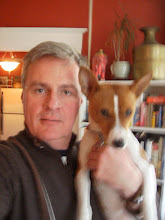MAGPIE TALE: The Lost Art of Poultry Photographic Portraiture
 (Our contribution to this week's Magpie Tale community.)
(Our contribution to this week's Magpie Tale community.)When news began to spread in 1826 of Joseph Nicéphore Niépce's "View from the Window of Le Gras" -- believed to be the first photograph -- excitement swept Europe and the Western Hemisphere as enterprising souls realized that the implications of this new technology were infinite.
While kings, queens, prime ministers and other rulers would soon be sitting for their portraits, a more practical application began with arguably greater economic and social implications. By the early 1830s, livestock and barnyard animal photography was quickly emerging as one of the lesser known growth sectors of the Industrial Age. Though significant in Europe, in primarily agrarian United States and Canada, it proved to have even greater importance.
 No studio held more prominence in the field than Oak Leaf Studio in Akron, Ohio. Founded in 1851 by the Mullgardt twins -- Hubert and Hobart, German immigrants who established themselves as photojournalists during the Mexican American war -- it soon gained a national reputation. After the war, they settled in Ohio and established Oak Leaf on Mulberry Avenue on the western edge of downtown Akron.
No studio held more prominence in the field than Oak Leaf Studio in Akron, Ohio. Founded in 1851 by the Mullgardt twins -- Hubert and Hobart, German immigrants who established themselves as photojournalists during the Mexican American war -- it soon gained a national reputation. After the war, they settled in Ohio and established Oak Leaf on Mulberry Avenue on the western edge of downtown Akron. Similar studios had been established in Manhattan, Boston and Philadelphia. These urban technicians may have been more skilled with lenses and darkroom technique but lacked the Mullgardts' rapport with farmers and, more importantly, their feathered and furred subjects.
Similar studios had been established in Manhattan, Boston and Philadelphia. These urban technicians may have been more skilled with lenses and darkroom technique but lacked the Mullgardts' rapport with farmers and, more importantly, their feathered and furred subjects.The Mullgardts captured many handsome images of stallions, goats, mules, mares and heifers. But it was their poultry work, especially their exquisite rooster portraiture, that built their reputation and was central to taking the poultry industry from being a village-to-village cottage industry to a national enterprise.

Before the arrival of Oak Leaf Studio, farmers were able to market their chicks and eggs mainly by line drawings or written descriptions. A farmer in Fresno would not likely buy several dozen hens from a distributor in Pennsylvania just because of faith in a glowing paragraph description, but seeing a handsome photographic image was all it took to convince and entice them to put the money down and have a flock sent by rail across the continent.
After a successful start in Akron, family tensions going back to Bavaria arose, and in 1860 Hobart left for Tennessee and later became second only to Matthew Brady in capturing the brutality of the Civil War. During Reconstruction, he opened a small studio in Knoxville called Oak Brook, but he specialized in wedding and holiday portraits that were never as magical of those of roosters and hens.

Hubert continued undaunted, passing on the business to his son Heinz and son-in-law Everett in 1882. Both Hubert and Everett died during the 1901 smallpox outbreak, but Heinz soldiered on, continuing to produce the most stunning poultry portraits in the Midwest. By the 1910s, he had opened up franchises in Fort Wayne, Moline, Pottsboro and Duluth.
Heinz's only heir, Trudi, continued the business until the 1950s when she sold it to the Ohio Agrarian magazine and it slowly began to lose much of its magic. Trudi was warmly remembered from the 1920s onward for her chicken dance at the annual Farmer-Stockman Ball in Columbus. Plans for a statue of her in central Akron have been discussed for years, but a benefactor has never emerged.
Labels: 19th Century, chickens, Magpie Tales, photography



12 Comments:
A nice piece of history here .... good job!!
Helen - It's possible our fact checkers didn't confirm all of the accuracy.
I could imagine this being fact, but I'd not put a penny on it... A delightful read...
Tumblewords - As always, there is a bit of truth in fiction and a certain amount of fiction in truth. I was watching a documentary about Bay area architecture, and they mentioned the work of Mullgardt which I thought made a good name for a photographer as well.
Poultry work, indeed! Fun read, as always, Mr. Thief.
Willow - I need to do a follow up about Agnes Ashburn, Ohio's leading poultry photography make up artist.
Interesting take on this weeks magpie. That was a lot of fun to read!
Kristen - I think roosters raise our potential creativity.
Very interesting. I liked it muchly.
QMM
Queenmothermawmaw - Such praise from the royal family has all of the rooster in my rookery cockadoodling loudly.
Love the photos, and the story, but of course!
You forgot to mention our friend Brice's company, The Orange Chicken.
Salty - That's an entirely different chapter.
Post a Comment
<< Home